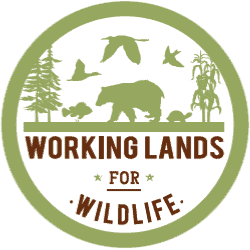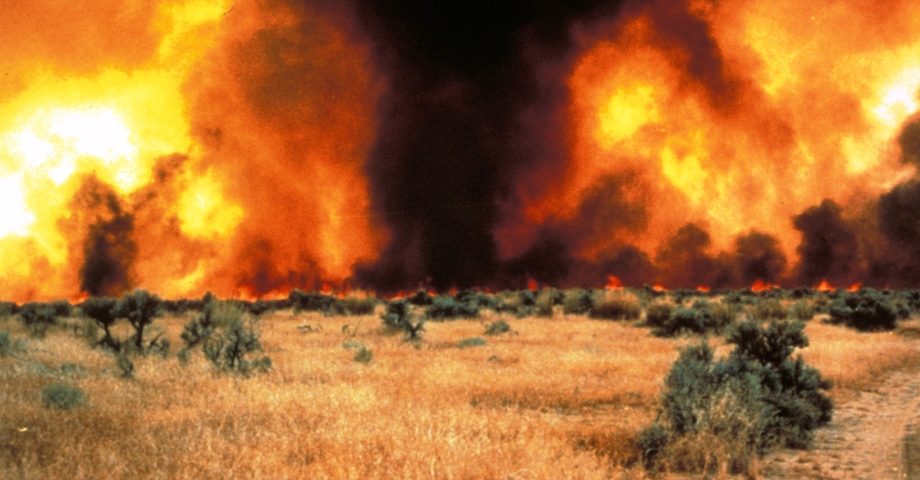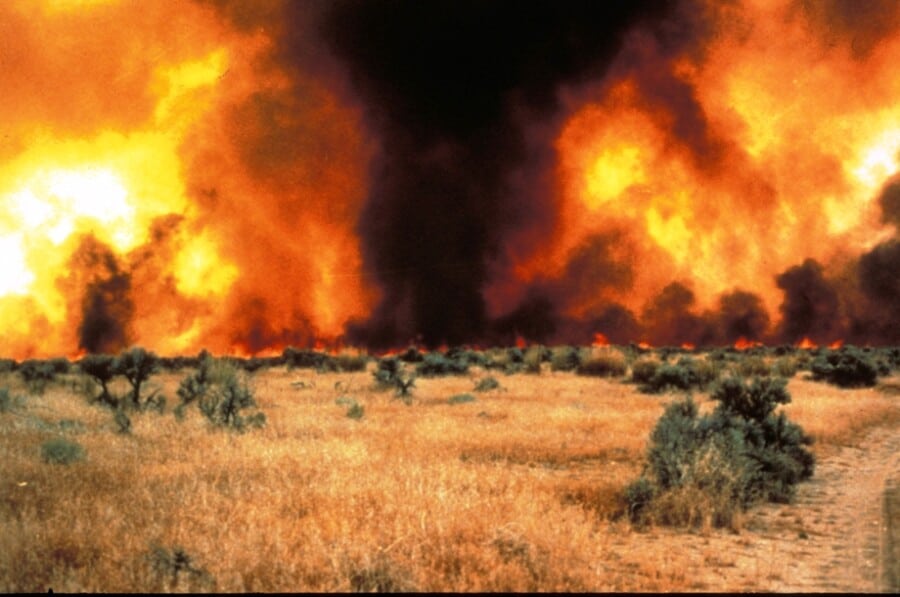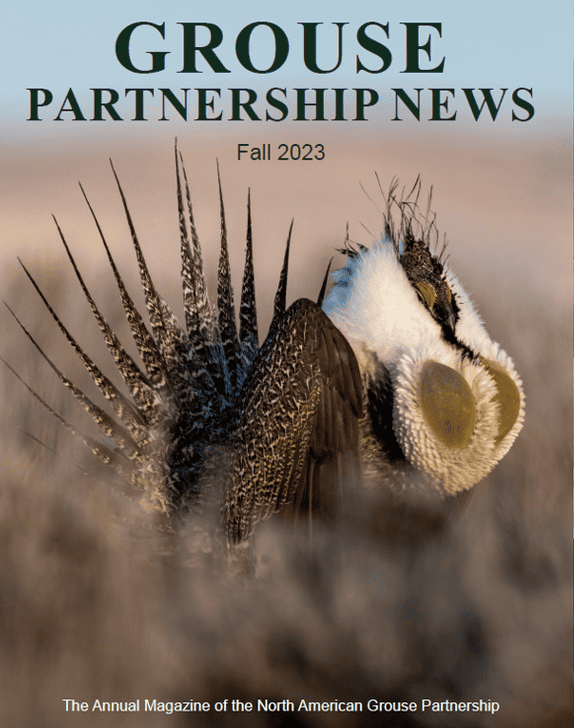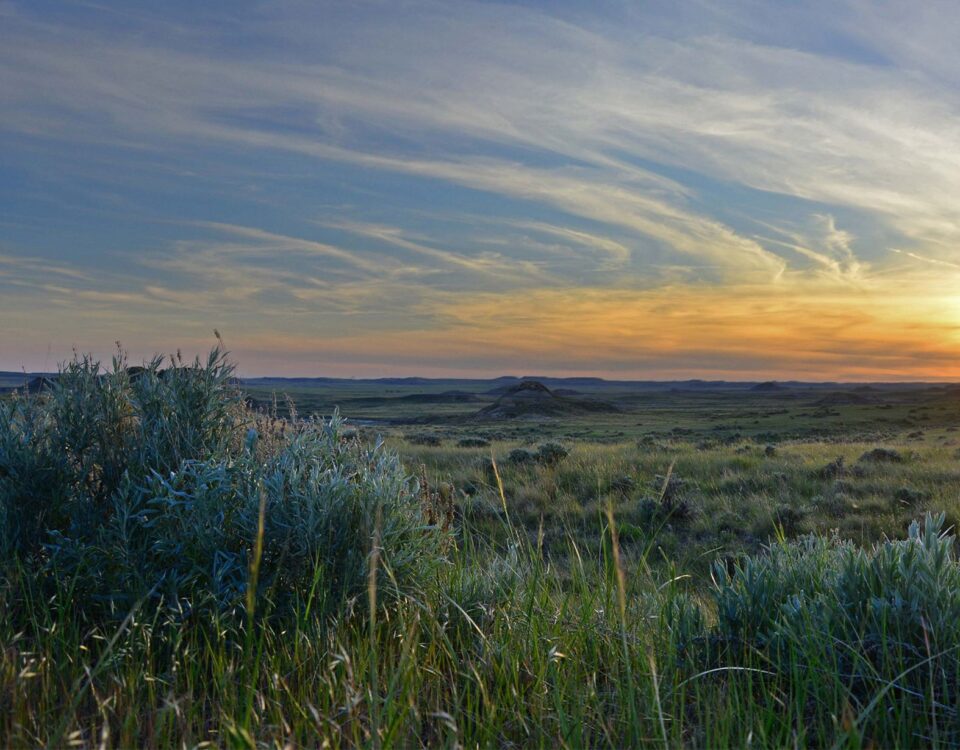
Why Is Cheatgrass Bad?
Mike Pellant with the Bureau of Land Management explains how cheatgrass and wildfire create a vicious cycle that harms wildlife and our way of life in the West … and gives solutions that are helping to reduce these threats.
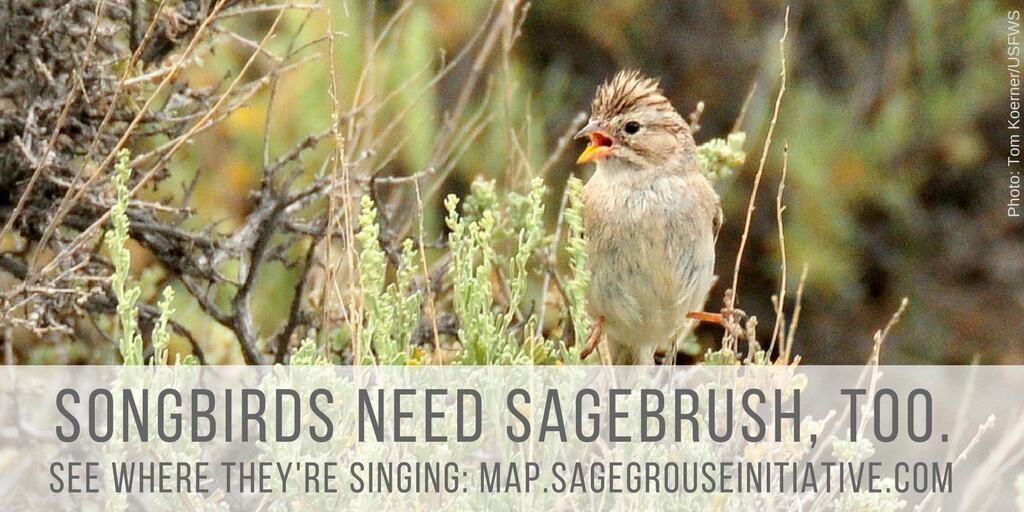
New Online Tool Shows Songbird Abundance Across Sagebrush Country
January 16, 2018
PHEASANTS FOREVER Magazine | Making Room Out West
February 5, 2018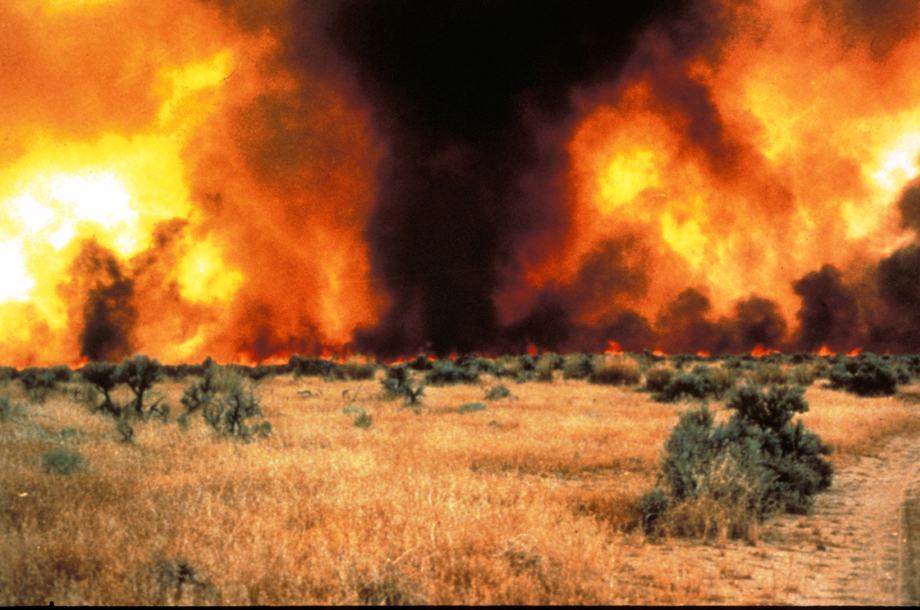
Cheatgrass (foreground) increases the impacts and probability of wildfires. Photo: Mike Pellant
Ask An Expert: Mike Pellant, Rangeland Ecologist (retired), Bureau of Land Management
Learn more through this NEW webinar series: Moving the Needle on Cheatgrass: Putting What We Know into Practice
What is cheatgrass?
It’s an annual invasive grass that is native to Europe and eastern Asia, not North America. It was brought over by European settlers in the mid to late 1800s.
It probably wouldn’t have outcompeted native vegetation if early settlers hadn’t also introduced large numbers of livestock like cattle and sheep into sagebrush country. Our palatable native grasses and forbs weren’t adapted to those high levels of uncontrolled overgrazing by domestic livestock, which created a void that cheatgrass quickly filled.
Cheatgrass is now found in at least 49 states, although it’s mainly a problem in the semi-arid Great Basin — which stretches across portions of Utah, Nevada, Idaho, Oregon, and California — since its adapted to thrive in areas with wet winters and hot, dry summers. People are now used to seeing cheatgrass-dominated landscapes, but it’s not what we should see.

Cheatgrass is an annual invasive plant that crowds out native plants in sagebrush range.
Why is it bad?
 Wildfires, for one. Unlike perennial native grasses, cheatgrass is an annual grass that grows in the spring and then dies off between late April and June, depending on local precipitation patterns. And it happens to die just in time to provide fuel for the West’s fire season.
Wildfires, for one. Unlike perennial native grasses, cheatgrass is an annual grass that grows in the spring and then dies off between late April and June, depending on local precipitation patterns. And it happens to die just in time to provide fuel for the West’s fire season.
Cheatgrass dries out much earlier than native vegetation, significantly lengthening the historic fire season. Plus, cheatgrass has very fine leaves and stems, which makes it ignite easily and causes fire to spread rapidly. Cheatgrass plants also grow very close together (up to 10,000 plants in a square-meter), creating a continuous fuel base. Basically cheatgrass is comparable to tissue paper covering the landscape — an easily-ignited fuel that carries fire quickly and spreads it rapidly.
Since native plant communities aren’t adapted to frequent wildfires, these fires create even more cheatgrass-dominated rangelands. Cheatgrass is adapted to efficiently use the increased nitrogen in the soil after a fire, and invades empty spaces created by the fire.
Cheatgrass creates a vicious cycle: wildfires promote more cheatgrass, which in turn further increases the impacts and probability of wildfires.
How does cheatgrass impact wildlife and range health?
It short-circuits a lot of the important ecological cycles. For example, cheatgrass has a shallow root system — most of the roots are concentrated in the top 12 inches of soil, so it absorbs much of the water and nutrients during the spring growing season, outcompeting native plants for limited resources.
The loss of native plants means losing their deeper roots systems, which create healthy soil. Roots of sagebrush and other native shrubs can grow up to eight feet deep, helping to cycle nutrients and utilize water deeper in the soil profile. Cheatgrass also affects the diversity and abundance of soil microorganisms, which may reduce the ability of native plants to grow in the future.
As for wildlife, the biggest threat from cheatgrass is the loss of habitat due to increased wildfires and the conversion of diverse native plant communities to monocultures of an annual grass. In addition, cheatgrass doesn’t meet the needs of most wildlife species. It doesn’t stay green long enough to provide nutritious forage during the summer and fall, nor does it provide the vegetation structure that many species need for cover or nesting habitat.
How big of a problem is it?
I found a report dated back to 1905 that the U.S. Forest Service sent to Congress recognizing cheatgrass as an emerging problem. Aldo Leopold wrote an essay in the 1940s called “Cheat Takes Over.” He could see into the future, warning us to watch out for this invasive weed.
Sadly, he was right. Now cheatgrass is one of the biggest invasive species problems in the western U.S., estimated to cover 50-70 million acres. The magnitude of the problem tends to overwhelm us.
What can we do to reduce the risks?
Restoration is tough in an environment that only gets 12 inches of precipitation in a good year. We won’t get rid of cheatgrass, but we can try to keep it as a minority component of the plant community instead of the majority species.
We have a number of different approaches that can reduce or remove cheatgrass. These include herbicides, mechanical treatments, and targeted livestock grazing. However, simply removing cheatgrass does not solve the problems associated with it. We also need to restore native plants that will successfully compete with it. For instance, deep-rooted perennial bunchgrasses are able to use water and nutrients not available to cheatgrass, and are very competitive once established.
One shared goal between private and public landowners is to increase “Ecosystem Resilience and Resistance.” This means making sagebrush range more resilient and able to bounce back after a wildfire, which in turn makes it more resistant to further cheatgrass invasion. The BLM, USFS, and NRCS are all partners in these resilience and resistance efforts. Caring for our perennial bunchgrasses is key to building resiliency back into the system.

Once native plants like bluebunch wheatgrass and Wyoming big sagebrush are established, it’s more difficult for cheatgrass to compete. Photo: Mike Pellant
Will you share some success stories on how people are coping with cheatgrass?
We now have fire rehabilitation programs that restore native vegetation by seeding plants like bluebunch wheatgrass and sagebrush. The BLM, USFS and NRCS are working with local and state and local partners to quickly rehabilitate burned areas and restore diverse native plants on public and private lands. The good news is that — after this rehabilitation — burned lands don’t convert to cheatgrass, which decreases future fire hazard.
We also have “pre-emergent herbicides” that work to reduce cheatgrass before it even has a chance to grow. Applying these herbicides in key locations soon after a fire can help give perennials a chance, and nudge plant communities in the right direction when combined with good grazing management.
We’re also actively planting fire-resistant vegetation in strategic locations to establish fuel breaks, called greenstrips. If we do have a wildfire, greenstrips help slow it down, giving fire suppression forces more time to attack the fire.
Another new management approach is to strategically focus spring livestock grazing in areas where cheatgrass is dominant — this reduces available fuels before the start of the fire season.
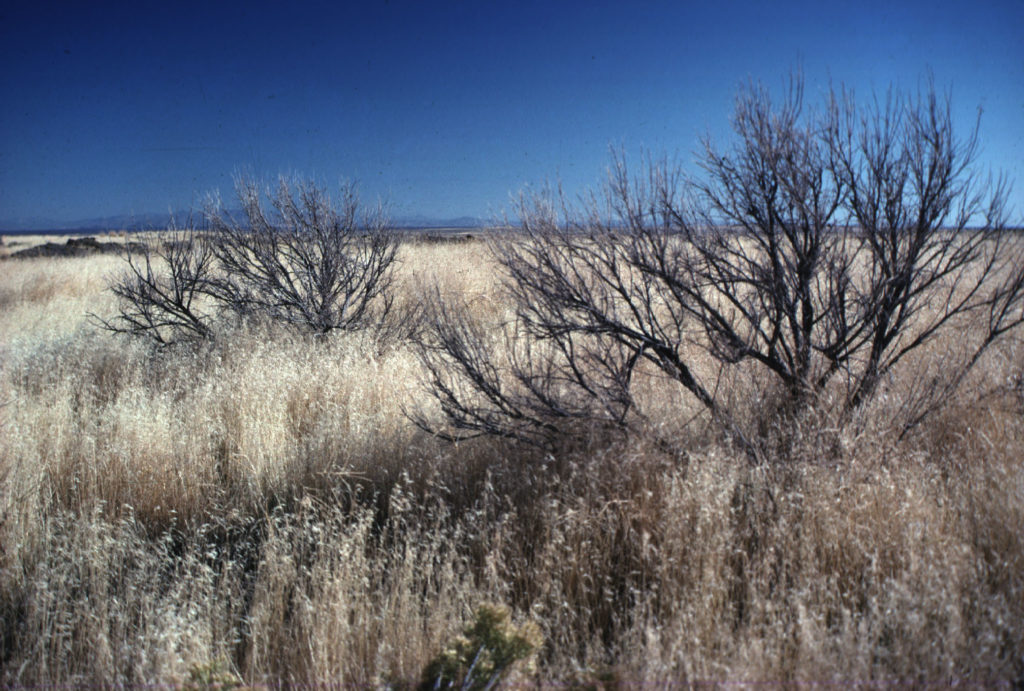
Cheatgrass creates a monoculture if untreated post-wildfire, as pictured here amid the skeletons of burned sagebrush. Photo: Mike Pellant
How can managers learn more?
There’s always room for more education to expand our cooperative knowledge, and for getting more people onboard to support solutions to the cheatgrass problem.
An upcoming webinar series sponsored by the Great Basin Fire Science Exchange aims to help managers make better decisions about what they can do to help. This series will highlight some things we can do to move the needle on cheatgrass. Over the next few months, several speakers will present the latest science on herbicides, grazing to promote perennials, recognizing opportunities for strategic intervention, and more.
To me, there’s no bigger issue for our western landscape than wildfires and reducing the fuels that feed them. We’ve made some progress, but I wish we were further along. Hopefully people will build on what we have now, and we’ll have a solution someday.
MEET THE EXPERT

Mike Pellant devoted his career (and now his retirement) to combatting the risks associated with cheatgrass in the West.
How did you become versed on reducing cheatgrass?
I’ve been involved with cheatgrass one way or another since I started working with the BLM 42 years ago as a range conservationist. I coordinated the greenstrip program for BLM when it first started in the ‘80s. As part of this program, I traveled to Russia twice to look at cheatgrass in its native environment and discuss solutions with scientists.
Later I was the coordinator for the five-state Great Basin Restoration Initiative and worked closely with managers and scientists on strategies to reduce cheatgrass and restore native plant communities.
I’ve lived in Boise, Idaho for most of my career, but I think my early background farming in Kansas really struck a note with me: it gave me a strong interest in finding solutions to reduce problems on working lands. Plus, I like challenges and cheatgrass is the ultimate resource challenge!
What do you like to do in your free time?
I’m retired, but still contract with BLM on two projects. One is updating an interagency technical reference document on assessing rangeland health, and the other is working on a project to strategically reduce fine fuels using livestock. I also do a lot of trainings on sagebrush-steppe restoration and rangeland health, and love sharing what I’ve learned, mistakes and all. Work never seemed like work—it’s always been my passion, and I’ll continue to stay involved as long as I can.
I also enjoy spending time with my five granddaughters and my family. After recovering from recent ankle and hip surgeries, I’m also looking forward to getting back out to hike and play tennis again.
ABOUT OUR PARTNER
 Bureau of Land Management manages public lands for multiple use across regions and landscapes, with partners and using sound science. More than half of all remaining habitat for the greater sage-grouse is on public lands, most of it managed by the BLM.
Bureau of Land Management manages public lands for multiple use across regions and landscapes, with partners and using sound science. More than half of all remaining habitat for the greater sage-grouse is on public lands, most of it managed by the BLM.
Role with Sage Grouse Initiative: SGI partners with private landowners as well as agencies that manage public lands to ensure conservation efforts span both sides of the fence in 11 western states. The BLM recently signed a 5-year agreement to promote win-win solutions for people and wildlife on public lands across the sagebrush sea. Their targeted conservation projects will build off the successful model pioneered by the NRCS-led Sage Grouse Initiative on private ranchlands.
Learn More: www.blm.gov
Read more Ask An Expert posts >
Learn how BLM and its many partners get to work planting sagebrush seedlings to restore rangelands after the smoke clears.

